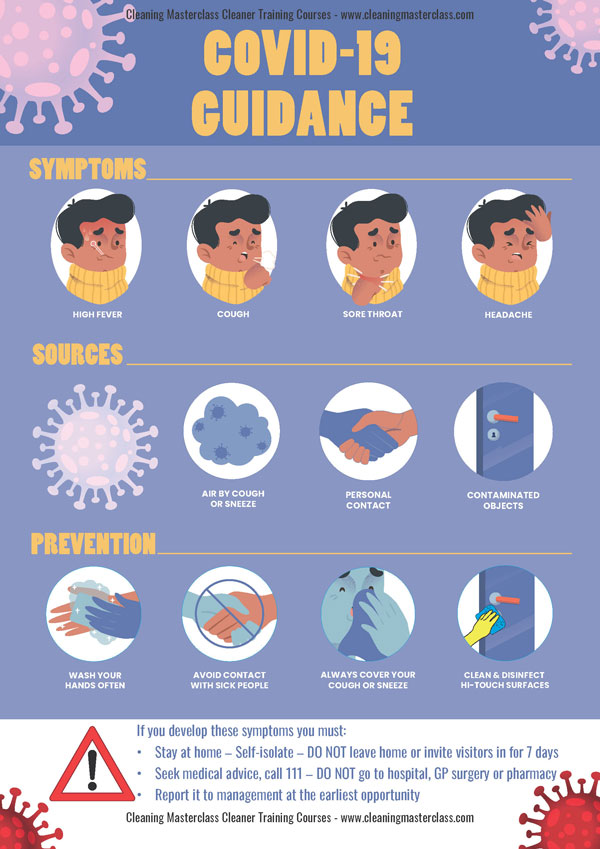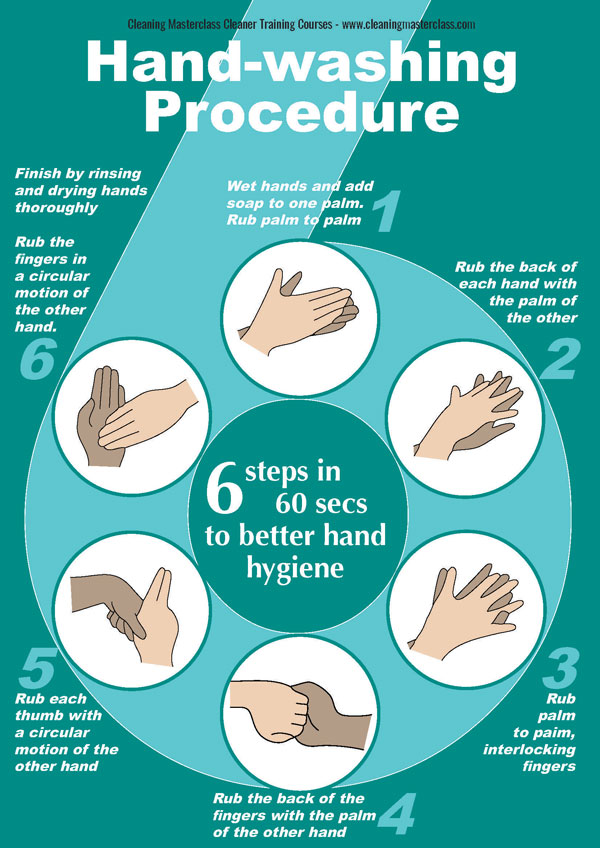
17 May Coronavirus (COVID19) & SARS Guidance
Background
At the end of December 2019 several cases of acute respiratory syndrome were reported in Wuhan City, China. It was very quickly identified as a new coronavirus, or severe acute respiratory syndrome coronavirus 2 (SARS-CoV-2). SARS-CoV-2 is a new strain of coronavirus that has not been previously identified in humans. Coronaviruses are viruses that circulate among animals with some of them also known to infect humans. Bats are considered as natural hosts of these viruses, yet several other species of animals are also known to be a source. For instance, the Middle East Respiratory Syndrome Coronavirus (MERS-CoV) is transmitted to humans from camels, and the Severe Acute Respiratory Syndrome Coronavirus-1 (SARS-CoV-1) is transmitted to humans from civet cats.
How does COVID Spread?
Just like the common cold and the flu virus, COVID is transmitted through direct contact with inhalation of droplets from coughs and sneezes of an infected person. The droplets only travel for a short distance through the air (usually less than 2 meters) and usually the droplets are too large to remain suspended in the air. The droplets will settle on surfaces close to the person and on the hands of the infected person. Once the hands of the infected person are contaminated, any surface they touch or direct contact with other people, the virus is transferred on to that surface or person – this is why it is vital to wash your hands thoroughly after sneezing or coughing and regularly after handling contaminated surfaces.
What are the symptoms of COVID-19?
Symptoms can include fever, cough and shortness of breath. In more severe cases, infection can cause pneumonia or breathing difficulties. These symptoms are similar to the flu (influenza) or the common cold, which are a lot more common than COVID-19. This is why testing is required to confirm if someone has COVID-19.
What if I develop symptoms of COVID-19?
If you develop these symptoms you must:
- Stay at home – Self-isolate – DO NOT leave home or invite visitors in for 7 days
- Seek medical advice, call 111 – DO NOT go to hospital, GP surgery or pharmacy
- Report it to management at the earliest opportunity
How long can the virus survive on surfaces?
The COVID-19 virus may survive on some surfaces for up to 7 days, but, because the virus is relatively new, this is an estimate. New data emerging indicates that the virus can:
- Survive for several days at cold temperatures of less than about 10 degrees centigrade. At 4 degrees centigrade, the virus is known to survive for 14 days. At room temperature (22 degrees centigrade), the virus is known to survive for 7 days
- Survive on very soft fabrics and materials like paper, tissue and cloths for up to 6 hours. On tissues, the survival rate is 30 minutes
- Survive wooden surfaces and glass up to 2 days
- Survive stainless steel and plastic surfaces up to 4 days
- Survive on copper surfaces for up to 4 hours
It is important to point out, there is a big difference between being able to detect the virus on surfaces and the virus being able to infect people. The virus can be detected on metal and plastic surfaces for up to 7 days, however the levels are too low to have the potential to be transmitted by contact. The virus is highly susceptible to antiviral disinfectants.
How do we make sure we are safe?
- Wear disposable gloves and apron when cleaning
- Wear a face mask if working in close proximity (2 meters or less on average) with other people who show one or more symptoms, or who are high risk, or you start to develop symptoms.
- Try to maintain a distance of at least 2 meters between you and other people
- Full room clean and disinfection should take place on confirmed or highly suspected case of COVID
- Good hand washing coupled with hand disinfectant to be used before and after cleaning
- Priority given to thorough routine cleaning of all hi-touch surfaces. All hi-touch surfaces must be cleaned at least once a day. In busy areas, like waiting rooms, kitchens, toilets, the cleaning must be done several times a day.
Common examples of Hi-touch Surfaces
Offices
- Light switches
- Door handles and push plates – any area on the door that people push or grab
- Shared desks – desks or worksurfaces shared by many people during a typical day
- Handrails and grab bars
- Communal chairs – concentrating on the areas handled by people, like arm rests, backs and sides
- Reception countertop and screen
Kitchens
- All worktops
- Taps
- Light switches and power switches (that are commonly used)
- Kitchen appliance door handles and switches/buttons
- Cupboard doors and handles – commonly used cupboards
Toilets
- Toilet flush handles
- Toilet seat and lid
- Cubicle doors and handles
- Sinks and taps
- Soap dispensers, hand towel dispensers and hand driers only if they require pressing a button or pulling a handle to operate


